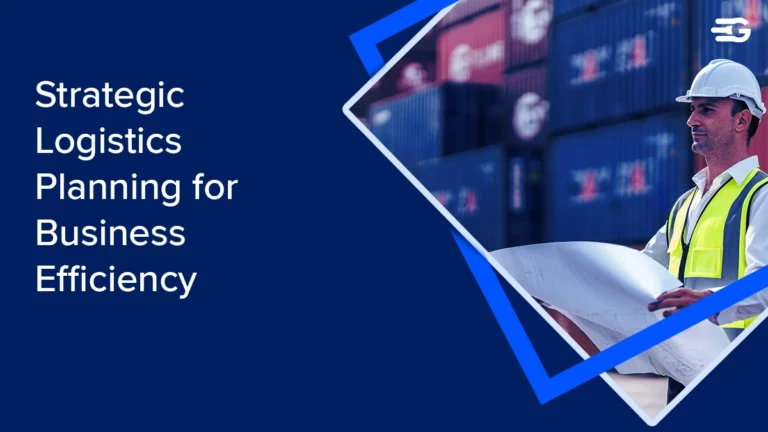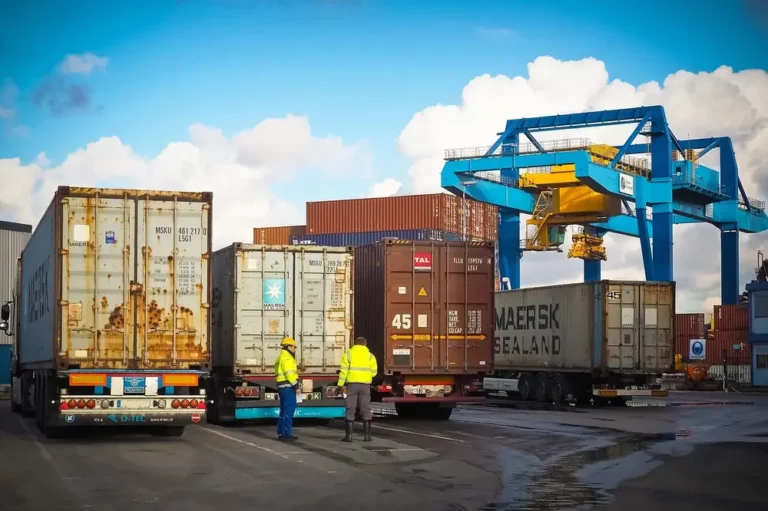Mastering Supply Chain Forecasting for Enhanced Operational Efficiency
Effective supply chain management has become a defining factor for organizations that thrive in today’s market. At the center of this is supply chain forecasting – a strategic tool that equips companies to anticipate future trends, make well-informed decisions, and enhance operational efficiency, profitability, and long-term growth.
Gone are the days of conventional forecasting. Supply chain forecasting has evolved, now incorporating cutting-edge technologies, advanced analytics, and a data-driven approach that extends beyond mere predictions. By harnessing sophisticated machine learning algorithms and real-time demand signals, modern forecasting provides businesses with unmatched foresight, enabling them to navigate market challenges with accuracy and agility.
By mastering the art of supply chain forecasting, organizations gain a powerful competitive advantage – the ability to optimize inventory levels, streamline logistics operations, and inform strategic decisions that outmaneuver rivals. This pivotal capability separates industry leaders from followers, turning forecasting into a formidable weapon in the arsenal of success.
Supply Chain Forecasting Techniques
Supply chain forecasting is a complex field with many techniques, each tailored to meet specific business needs and data sets. These techniques range from qualitative methods, which use industry experts’ insights and market research, to quantitative methods, which rely on historical data and advanced analytics. The forecasting toolkit is extensive, versatile, and adaptable.
Shopify, a leading e-commerce platform, advises exploring a wide range of forecasting methods. This includes traditional approaches like moving averages and exponential smoothing, as well as more advanced techniques like regression analysis and machine learning models. By testing different methods, businesses can find the best forecasting approach that suits their unique operational needs.
Choosing the Right Forecasting Model
Achieving accurate and impactful forecasting isn’t just about using the latest techniques or applying a one-size-fits-all approach. It requires a strategic and customized method. This approach carefully considers the unique aspects of your business. You must analyze factors like data quality, demand volatility, product lifecycles, operational constraints, and the specific goals driving your forecasting.
You can find the most effective forecasting model by taking a holistic view and understanding your supply chain’s complexities. Whether qualitative, quantitative, or a hybrid, the model must align with your operational needs. This tailored approach ensures your forecasting is grounded in solid data, industry best practices, and a deep understanding of your business. This empowers you to make informed decisions that lead to real results.
Benefits of Accurate Supply Chain Forecasting
Enhancing Operational Efficiency
Accurate and reliable supply chain forecasting is the catalyst that unlocks a world of operational efficiency, a cornerstone upon which successful businesses are built. By anticipating future demand with precision, organizations can optimize inventory levels across their supply chain, minimizing the risk of overstocking or stockouts – two costly scenarios that can cripple operational efficiency and erode profitability.
By proactively aligning inventory levels with projected demand, businesses can reduce the financial burden of carrying excessive stock, while simultaneously ensuring that they have the necessary products available to meet customer needs, thereby enhancing satisfaction, fostering loyalty, and driving sustained growth.
Moreover, precise forecasting empowers organizations to streamline their logistics operations, from production planning and procurement to warehousing and distribution, ensuring that resources are allocated judiciously and in alignment with evolving market dynamics. This holistic approach to demand anticipation and supply chain orchestration ultimately translates into cost savings, increased productivity, and a heightened ability to respond to changing market conditions with agility and resilience.
Supporting Strategic Decision Making
Accurate forecasts serve as a powerful compass, guiding businesses through the often-turbulent waters of strategic decision-making. By providing a clear and data-driven view of future trends, emerging opportunities, and potential pitfalls, forecasting insights empower organizations to make informed choices that shape their long-term trajectories.
From capacity planning and resource allocation to strategic partnerships, market expansions, and product development initiatives, the ability to anticipate future demand patterns and market dynamics is invaluable. Armed with these insights, businesses can proactively align their strategies with emerging consumer preferences, capitalize on lucrative market opportunities, and pivot their operations to stay ahead of the competition.
Ultimately, effective supply chain forecasting elevates decision-making from a reactive to a proactive endeavor, enabling organizations to navigate the complexities of the modern business landscape with confidence, agility, and a firm grasp on the factors that will shape their long-term growth and profitability.
Common Challenges in Supply Chain Forecasting
Identifying and Overcoming Barriers
While the benefits of supply chain forecasting are undeniable, businesses often face formidable challenges in implementing effective forecasting strategies that deliver tangible results. One of the most significant obstacles is the issue of data quality – forecasting models are only as reliable as the data that fuels them, and incomplete, inaccurate, or outdated information can significantly undermine the reliability and accuracy of forecasts.
Additionally, a lack of collaboration and communication between different departments and stakeholders within an organization can hinder the integration of forecasting into the overall supply chain management strategy. Silos that impede the free flow of information and insights can create disconnects between demand forecasting, inventory management, and logistics operations, ultimately undermining the very essence of a cohesive, data-driven approach to supply chain optimization.
LinkedIn, the world’s largest professional network, has consistently highlighted the importance of addressing these obstacles by fostering cross-functional collaboration and investing in robust data management systems. By breaking down departmental barriers and ensuring that diverse perspectives and data sources are integrated into the forecasting process, organizations can enhance the accuracy and relevance of their demand predictions.
Leveraging Technology to Address Forecasting Challenges
The ability to leverage cutting-edge solutions is paramount to overcoming forecasting challenges. Emerging technologies such as AI and machine learning have revolutionized the world of supply chain forecasting, offering unprecedented levels of accuracy and adaptability.
By harnessing the power of these advanced analytics tools, businesses can process vast amounts of data from multiple sources, identify intricate patterns and correlations that would be imperceptible to the human eye, and continuously refine and optimize their forecasting models as new information becomes available. This real-time adaptability is particularly valuable in today’s dynamic business environment, where market conditions and consumer preferences can shift rapidly, rendering static forecasting models obsolete.
Moreover, the integration of the Internet of Things (IoT) and predictive analytics holds the potential to further enhance supply chain forecasting capabilities. By seamlessly connecting a network of intelligent devices and sensors throughout the supply chain, organizations can gain unprecedented visibility into real-time demand signals, inventory levels, and logistical operations. This continuous stream of data, when combined with advanced predictive analytics, enables businesses to forecast demand with unparalleled accuracy, respond swiftly to supply disruptions, and optimize their operations in a proactive and agile manner.
Implementing Forecasting Solutions in Your Supply Chain
Steps to Improve Forecasting Accuracy
To unlock the full potential of supply chain forecasting, businesses must adopt a strategic and proactive approach. Here are some actionable steps to enhance your forecasting capabilities:
1. Assess and Optimize: Conduct a comprehensive assessment of your current forecasting practices, identifying areas for improvement, potential bottlenecks, and opportunities for optimization. This critical first step lays the foundation for a data-driven transformation.
2. Invest in Data Management: Prioritize the implementation of robust data management systems that ensure data quality, accessibility, and integrity. High-quality, reliable data is the lifeblood of accurate forecasting, and investing in the proper infrastructure to capture, store, and analyze data from multiple sources is essential.
3. Foster Collaboration: Break down departmental silos and foster a culture of collaboration between teams such as sales, marketing, operations, and analytics. Encourage the free flow of information and insights, ensuring that diverse perspectives and data sources are seamlessly integrated into the forecasting process.
4. Embrace Innovation: Stay ahead of the curve by actively exploring and embracing cutting-edge forecasting tools and technologies, such as AI, machine learning, and advanced analytics platforms. These innovative solutions can provide a significant competitive advantage by enabling more accurate, adaptive, and data-driven forecasting.
5. Continuous Improvement: Adopt a mindset of continuous improvement by continuously monitoring the performance of your forecasting strategies, measuring their impact against key metrics, and refining your approaches based on evolving market dynamics and customer needs. Forecasting is an iterative process, and staying agile and adaptable is essential for maintaining accuracy and relevance in an ever-changing business landscape.
Future Trends in Supply Chain Forecasting
Emerging Technologies and Their Impact
As technology continues to evolve at a breakneck pace, the future of supply chain forecasting looks increasingly promising, with a wealth of innovative solutions on the horizon. One such game-changing development is the integration of the Internet of Things (IoT) and predictive analytics. By seamlessly connecting a network of intelligent devices and sensors throughout the supply chain, organizations can gain unprecedented visibility into real-time demand signals, inventory levels, and logistical operations.
This continuous stream of data, when combined with advanced predictive analytics and machine learning algorithms, will enable businesses to forecast demand with unparalleled accuracy, respond swiftly to supply disruptions, and optimize their operations in a proactive and agile manner. The ability to anticipate and adapt to changing market conditions in real-time will be a significant competitive advantage, allowing organizations to stay ahead of the curve and deliver exceptional customer experiences.
Additionally, the advent of blockchain technology holds the potential to revolutionize supply chain transparency and data integrity, with profound implications for forecasting accuracy. By leveraging blockchain’s decentralized, tamper-proof ledger of transactions and events, businesses can gain unprecedented visibility into their supply chain operations, from sourcing and procurement to manufacturing and distribution.
This enhanced transparency and traceability will not only improve the quality and reliability of the data feeding into forecasting models but also enable businesses to identify and mitigate potential disruptions proactively, minimizing their impact on demand and supply dynamics. Furthermore, the immutable nature of blockchain records will foster trust and collaboration among supply chain partners, facilitating the sharing of accurate, real-time data – a critical component of effective forecasting in complex, globally interconnected supply chains.
Conclusion: The Strategic Advantage of Advanced Forecasting
Embracing advanced forecasting methods is no longer a luxury but a necessity. As market dynamics become increasingly complex and consumer demands more volatile, the ability to anticipate future trends and make data-driven decisions will be the cornerstone of operational excellence, profitability, and sustained growth.
By leveraging the power of cutting-edge technologies, fostering cross-functional collaboration, and adopting a mindset of continuous improvement, businesses can unlock the full potential of supply chain forecasting. From optimizing inventory levels and streamlining logistics operations to informing strategic decision-making and capitalizing on emerging market opportunities, accurate forecasting is a force multiplier that empowers organizations to gain a formidable competitive edge.






